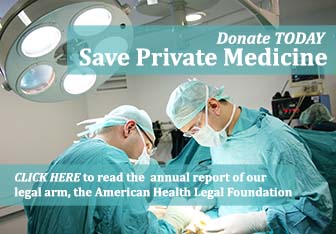At Children’s Hospital in Denver, three babies recently had successful heart transplants from neurologically damaged donors who were not brain dead. The donors were removed from the ventilator in the operating suite, and their hearts were harvested within minutes after asystole.
In 2007, there were 793 cardiac-death donors (“non-heart-beating donors”), about 10 percent of all deceased donors, according to the United Network for Organ Sharing. Most recipients were adults who received a kidney or liver (Stephanie Nano, Associated Press 8/13/08).
Death statutes require the irreversible cessation of circulation and respiration or the irreversible cessation of brain functions. In the three controversial Denver cases, cessation of heartbeat was not irreversible; the hearts started up again after transplantation. One baby’s heart had been stopped for only 75 seconds. The only reason the donor could not have been resuscitated was the “do not resuscitate” order. It is not known how long a heart has to be stopped before “autoresuscitation” is impossible (Bernat JL. N Engl J Med 2008;359:670-673).
“Donor care” included placement of femoral venous and arterial sheaths, using local anesthesia; two heparin boluses of 100 U/kg and later 300 U/kg; sedation and analgesia considered appropriate for withdrawal of life support (fentanyl at a mean dose of 4 µg/kg and lorazepam at a mean dose of 0.1 mg/kg); and extubation.
Analgesic and sedating drug doses were stated to be lower than those used in infants who could not be considered for donation, and the heparin dose was within the range used for cardiopulmonary bypass (Bouck MM, et al. N Engl J Med 2008;359:709-714).
(The apnea test for brain death requires that the patient remain intubated, receive oxygen by continuous positive airway pressure to maintain saturation and an arterial pO2 >55 mm Hg, and be free of drugs that cause respiratory suppression.)
Boucek et al. note that using potential donors who die of cardiorespiratory causes could increase the donation rate by 70 percent (ibid.).
New England Journal of Medicine editorialists write that there is an “urgent need for more infant donors,” and that “meeting this need while being mindful of the ethical considerations has been challenging and complex” (Curfman GD, et al. N Engl J Med 2008:359:745-750). A free video roundtable on the ethical issues is available at www.nejm.org.
Bernat asks: “To what extent should society permit manipulation of an organ donor or alteration of the determination of human death for the good of organ recipients?”
Truog and Miller point out the difficulties posed by changing the definition of death to mean something other than “cold, blue, and stiff.” Many brain-dead patients retain neurologic functions such as the regulated secretion of hypothalmic hormones. If permanent unconsciousness is the justification for taking the organs, the same rationale should apply to patients in a persistent vegetative state.
“The reason it is ethical [to take the organs] cannot be that we are convinced they are really dead,” they write. “Irreversibility” means a “choice not to reverse.” Thus, instead of making unsupportable revisions of the definition of death, we should do away with the “dead donor” rule. At this point, it “has greater potential to undermine trust in the transplantation enterprise than to preserve it.” Instead, we should rely on “valid consent by the patient or surrogate” in order to “maximize the number and quality of organs available to those in need” (Truog RD, Miller FG. N Engl J Med 2008:359:674-675).
Some might consider Truog, and Miller to be “brain death deniers,” and argue against the right to choice of “criteria of death.” Offering “futile treatment” to a brain-dead patient to please the family might conflict with or undermine the “regulative ideals” of medicine. Accommodation to cross-cultural conflicts “has limits when it comes to real costs to others and society,” write Applbaum et al. Specifically, the definition of death is “not a matter of individual choice controlled by an advance directive or by medical surrogates” (Applbaum AI, et al. JAMA 2008;299:2188-2193).
It appears that, according to these views in prestigious medical journals, rights and ethical principles emanate from “society,” and can be changed by the accepted authorities in case of “need.”
Additional information:
- “Taboo Transgressions in Transplantation Medicine,” by Anna Bergmann, Ph.D., J Am Phys Surg, summer 2008.
- Review of Twice Dead: Organ Transplantation and the Reinvention of Death by Margaret Lock, reviewed by Elizabeth Kamenar, M.D., J Am Phys Surg, Summer 2008.
- “Top Hospitals Typically Disregard Brain Death Guidelines,” AAPS News of the Day 1/7/08.



